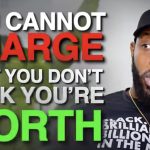If you think you have a money problem, I’m here to tell you that it’s never actually a money problem. After decades of helping people build wealth and becoming a multimillionaire by age 26, I’ve discovered that the real game is about value creation.
Here’s something that might surprise you: it’s harder to get to $100,000 than it is to go from $100,000 to $1 million. This insight contradicts what most people assume about wealth building, but I’ve seen it play out repeatedly in my career and the careers of those I’ve coached.
The Mental Shift Required for Wealth
When I was starting out as a coal miner’s son with limited financial resources, I had to develop what I now recognize as the essential components of wealth creation: mental capital and relationship capital. These assets are far more valuable than the cash in your account.
To build these forms of capital, I followed a process that anyone can replicate:
- Develop practical, bankable skills that solve real problems
- Get in the game with progress over perfection
- Gain proximity to people playing a bigger game
- Learn to ask better questions
- Become a value creator rather than a consumer
The consumer condition is deadly to wealth building. Consumers are always looking to take more than they give, and you can sense it immediately—it’s repelling. Think of value like a bank account: you must make deposits before you can make withdrawals.
The Art of Creating Value
Many people ask the wrong question when trying to build wealth. They ask, “How can I create value?” But when you ask this of others, you’re offloading the responsibility to them. Better questions lead to better answers, especially in today’s AI-driven world.
When I meet someone, I always ask myself, ‘Can I help?’ If not, who do I know that can? This mindset enables me to leverage my relationship capital, forming connections that add value even when I can’t provide the service directly.
But be selective about who you help. As Adam Grant’s book “Give and Take” taught me, not everyone reciprocates value. There’s truth to the saying that “it’s those you do the most for that betray you in the end.” When you give without discernment, you drain your energy and enable entitlement.
Auditing Your Relationships
To accelerate your journey to wealth, audit your relationships and categorize them as:
- Subtractive relationships: Naysayers, confidence underminers, and those who talk but don’t act
- Additive relationships: People who bring value but with limitations
- Multiplier relationships: Those who promote you, give good advice, make amazing connections, and show ways to win together
All it takes is a few multiplier relationships to transform your trajectory. These people think and play big, showing us ways to win together. Conversely, relationships with “high rollers” who spend more than they can afford can drag you into their financial struggles and scarcity mindset.
Scaling From $100K to $1M
Once you reach $100,000, you’ve developed the skills, relationships, and momentum needed to scale. The difference between $ 100,000 and $1 million is often about leverage and systems.
In 1999, my second year in business, I made $96,000 selling life insurance. It was hard work—meeting with anyone I could, often nervous and stressed. By contrast, in 2024-2025, I generated more than $ 100,000 per month in recurring revenue because I had established frameworks, relationships, and knowledge that enabled me to scale.
Most people are trapped in the belief that value equals effort. They work hard with low leverage, earning a fair wage for their time. But the wealthiest people understand that vision determines value, and dollars follow value.
Consider the difference between someone doing landscaping and Bill Gates. Both may be excellent at what they do, but the landscaper has low leverage—they must be physically present to create value. Meanwhile, my book can be read by thousands simultaneously while I sleep.
Overcoming Mental Blocks
The biggest obstacle to wealth is often our own mental blocks. The solution? Be willing to be uncomfortable. The most incredible things in life—asking someone on a date, performing comedy for the first time, asking for help in business—all involve discomfort.
You must also be resourceful. When my book was coming out and I had just written a $91,000 check that exhausted my accounts, I didn’t say “I can’t afford it” when presented with a $25,000 opportunity to join Genius Network. Instead, I got creative, sold books at an event, and found a way.
Finally, you must take action. If you find yourself unwilling to act, it means you have personal work to do—addressing negative beliefs from childhood or learning from past mistakes.
The enemy to wealth building is worry, which leads to inaction and scarcity. To overcome limiting beliefs, consider therapies such as EMDR or the Emotional Freedom Technique, or simply talking to peers and mentors who can offer a different perspective.
Remember, it’s uncomfortable to do great things. But by building the muscle, gaining the skill, and learning continuously, you’ll find that the path to wealth becomes clearer—and the journey from $100K to $1M becomes more achievable than you ever imagined.







